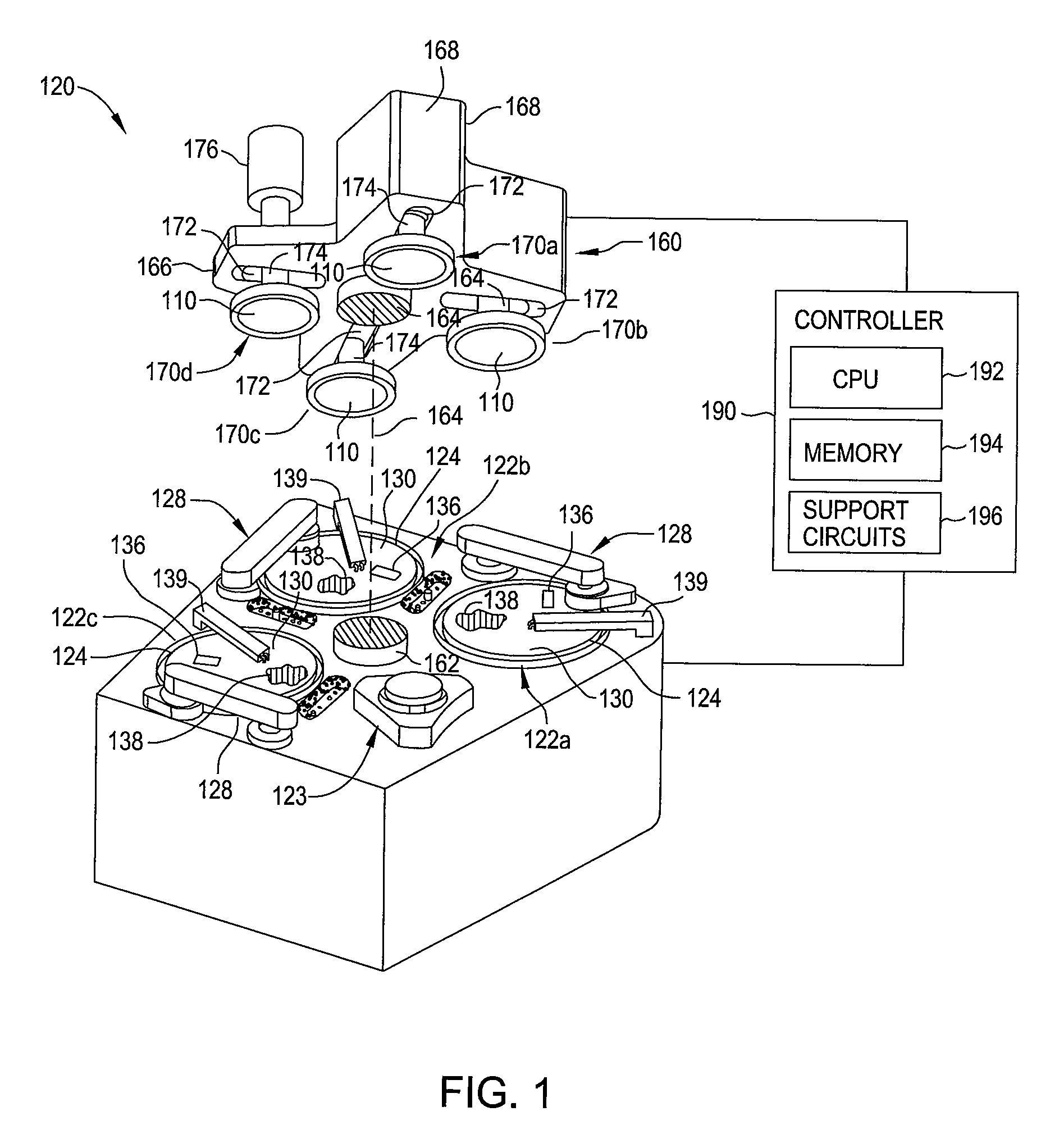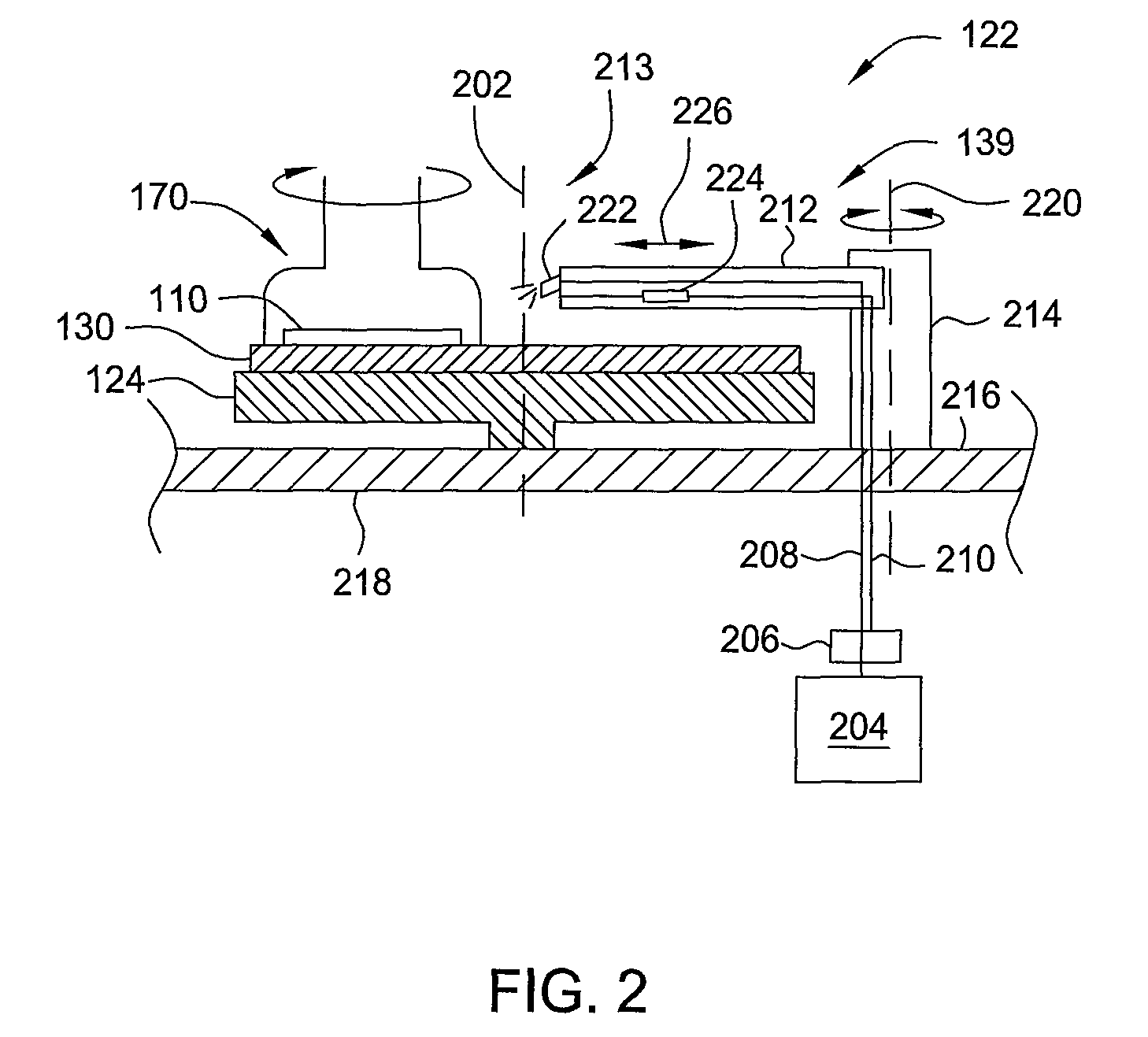Dishing and defect control of chemical mechanical polishing using real-time adjustable additive delivery
a technology of chemical mechanical polishing and defect control, applied in the direction of grinding machine components, manufacturing tools, lapping machines, etc., can solve the problem of one or more concave depressions, and achieve the effect of uniform removal
- Summary
- Abstract
- Description
- Claims
- Application Information
AI Technical Summary
Benefits of technology
Problems solved by technology
Method used
Image
Examples
Embodiment Construction
[0020]Embodiments described herein relate to removing material from a substrate. More particularly, the embodiments described herein relate to polishing or planarizing a substrate by a chemical mechanical polishing process. Moving forward to 32 nm node and beyond, the performance of CMP processes, such as defect, dishing and corrosion, shows an increased dependence on the chemical composition of polishing slurry, particularly during the initial and final stages of a polishing process. The concentration of certain additives plays a very important role in controlling defect, dishing, and corrosion. However, in practice, such additives are not adjustable during the polishing process and the concentration of such additives varies from the wafer center to wafer edge locations as such additives are not consumed uniformly. In addition, for certain applications inhibitors provided at low concentrations are needed during either the initial stages or final stages of the polishing process. Emb...
PUM
| Property | Measurement | Unit |
|---|---|---|
| flow rate | aaaaa | aaaaa |
| semiconductor | aaaaa | aaaaa |
| flow rate | aaaaa | aaaaa |
Abstract
Description
Claims
Application Information
 Login to View More
Login to View More - R&D
- Intellectual Property
- Life Sciences
- Materials
- Tech Scout
- Unparalleled Data Quality
- Higher Quality Content
- 60% Fewer Hallucinations
Browse by: Latest US Patents, China's latest patents, Technical Efficacy Thesaurus, Application Domain, Technology Topic, Popular Technical Reports.
© 2025 PatSnap. All rights reserved.Legal|Privacy policy|Modern Slavery Act Transparency Statement|Sitemap|About US| Contact US: help@patsnap.com



